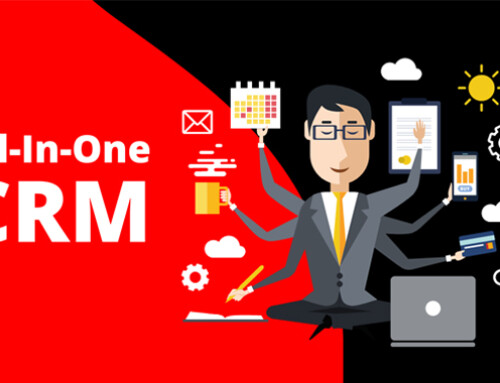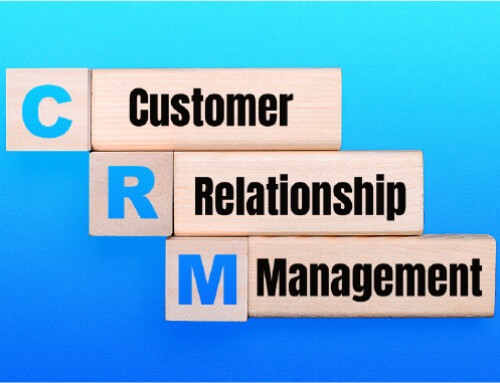Contents
You’ve probably heard the term “KPIs,” or Key Performance Indicators. In short, a KPI is a metric that helps you determine how well your business is performing in terms of its goals. The most common type of KPI is a sales-related metric, but any activity that can be measured by numbers can have KPIs attached to it. For instance, if your goal is to increase revenue by $100 million over the next five years, then your KPIs should include metrics like average annual growth rate (AAR) and average annual revenue per customer (ARPC). But what about lead generation? How do you measure the effectiveness of your current strategy?
A lead generation metric is a measurement of how effective your lead generation process is. It’s an indicator that shows how well your company is able to generate leads, the quality of those leads, and whether or not they are being successfully converted into customers. In this post, we’ll walk through 6 of the most important types of metrics you can use to measure your lead generation performance: customer acquisition cost (CAC), return on ad spend (ROAS), conversion rates for different sources/campaigns, average deal size, number of opportunities in the pipeline at any given time and sales-cycle length.
Customer Acquisition Cost
There are two main ways to calculate your customer acquisition cost:
- Cost per lead: This metric is calculated by dividing the total cost of acquiring a lead by the number of leads generated. This will give you an idea of how much you spend on each new customer.
- Cost per sale: This metric measures what it costs for each sale, which can be calculated by dividing the total cost of sales by the number of sales made.
Return on Ad Spend
ROAS is a useful metric for measuring the effectiveness of your marketing campaigns. It’s calculated by dividing the total revenue generated by the total cost of your ads. For example, if you spent $500 on ads and got net revenue of $1000, then your ROAS would be 2.0 (or 200%).
ROAS is an important metric that helps you understand how much money each marketing channel is generating relative to its costs. You can then use this information to evaluate which channels are working best for your business or product and optimize those channels accordingly.
Conversion Rates
The conversion rate is a metric that measures the percentage of website visitors who take the desired action. For example, if you have 100 people visit your website and 5 clicks on an ad to download a whitepaper, then your conversion rate is 5%.
Conversion rates are useful in determining whether you’re getting leads that can turn into customers; however, they don’t tell you how many leads you’re getting or how many sales those leads are making. You can track this information by measuring the number of people who sign up for a free trial or download a white paper. You can also track this information by measuring the number of users who complete a purchase with their credit cards.
Average Deal Size
Average deal size is the average value of a customer’s order. It’s calculated by dividing the total revenue collected by the number of deals (in this case, orders).
The average deal size is a metric that can help you understand the profitability of your business because it shows how much each customer spends. The more they spend, the better it is for your business – especially if they’re repeat customers who keep coming back for more products/services.
Average Deal Size = Total Revenue / Number of Deals
Number of Opportunities
The number of opportunities is the total number of qualified leads that are currently in your pipeline. This would include all prospects who have expressed interest in purchasing your product and/or service but have not yet made a purchase.
It’s important to note that opportunities are not equivalent to sales. An opportunity can be an inquiry from a potential customer or a lead that you’re still nurturing through email marketing campaigns and other forms of outreach. The key takeaway here is that opportunities represent potential revenue for your business—and if you want more than just a few sales, you need more than just a few customers!
Sales Cycle Length
Sales cycle length is the amount of time between when a lead is generated and when that same lead converts to a closed deal. The shorter your sales cycle, the more efficient your sales team is—and vice versa.
The longer your sales cycle, the less efficient your sales team is. In other words: If you can reduce your average length of time from lead generation to conversion by half, you’ll double your revenue without spending any more money on marketing leads!
Leads generated
- Number of leads generated
This is the number of leads generated by marketing efforts. It’s important for companies to know how many people are being introduced to a business through their marketing efforts, so that they can make adjustments accordingly. For example, if the number of leads generated increases year after year but conversion rates remain low, then it’s likely that there is a disconnect between what you’re saying and how customers perceive your product or service.
- Percentage of leads converted into opportunities/customers
This metric measures how well your sales team converts leads into customers or opportunities (meaning they’re at least ready to buy). If this percentage has been increasing over time, it may be due to better communication between marketing and sales teams or improved lead generation tactics in general; however, if it isn’t increasing at all then something needs to change before any progress can be made with converting prospects into paying customers!
Lead conversion rate
Lead conversion rate is the percentage of leads that are converted to customers. The higher this number, the better.
The lower this number, the better.
Lead quality has a big impact on your lead conversion rate and therefore sales revenue. The higher your lead quality score, the more likely they are to convert into customers (and vice versa).
Close rate
The close rate is a ratio of the number of closed deals to the number of leads. It’s an important metric that tells you if your sales team is doing a good job at converting leads into customers. If the close rate is low, it means that your sales team isn’t doing well at converting leads into customers and you may need to hire more qualified people or improve training or coaching efforts.
You can set up automated emails that send after each lead stage so that when someone reaches their next benchmark (for example they fill out an application), they receive an email thanking them for their interest in the company and asking if there are any questions about using our products/services before moving forward with purchasing one.
Cost per new customer
Cost per new customer (CPC) is the average amount you spend to acquire a new customer. This includes all marketing costs, including sales and advertising. To calculate the cost per new customer, divide the total cost of acquiring new customers by the number of new customers:
Cost Per New Customer = Total Marketing Costs / Number of New Customers
Repeat sales from existing customers
Repeat sales are the bread and butter of any business. In fact, many companies have a goal of increasing repeat sales, which is one reason why they offer loyalty programs. Loyal customers tend to spend more money with you than new ones. For example, if you’re an auto dealer and you sell a car for $20K to an existing customer who’s had his current car serviced at your dealership for years, he’s going to spend about $1K on service for that same vehicle before he sells it again. This can add up quickly!
In order to increase repeat sales from existing customers, there are several things that need to be considered:
- You need a way to identify those who would like another purchase from your business (and possibly even more) in the near future. How do you know if this person is ready? By looking at their previous purchases and making educated guesses based on what they bought last time around. If someone consistently buys large quantities of paper towels every week when they run out but never buys toilet paper or dish soap—you can assume that they prefer using paper towels over other options when cleaning up after themselves at home (or maybe they enjoy having a variety). This doesn’t mean that everyone else using their restroom will follow suit—it just means we’ve found a pattern here: these people like buying paper towels because they’re not loyal enough shoppers yet!
Average order size
Average order size is a metric that measures the average value of a customer’s orders. This can be calculated by dividing the total sales revenue by the number of customers in your database, or it can be calculated on an individual basis by looking at the average price per item ordered for that customer.
As far as lead generation metrics go, average order size is one of the most important to track because it has many positive effects on your business’s performance:
- Customer satisfaction: if you have happy customers who are loyal and spend more than their competitors do, then they will be eager to buy from you again in the future.
- Customer loyalty: in addition to keeping them coming back for more each time they make a purchase (which increases your lifetime value), this also means that they won’t need to search elsewhere when they want something new—they already know where they want it from!
In the end, there is no one silver bullet for lead generation. The best way to improve your performance is by tracking these metrics and adjusting accordingly.
Marketing Qualified Leads (MQLs)
MQLs are leads that have been qualified by your marketing team.
Those MQLs have been passed through their funnel and deemed worthy by the sales team.
The first two steps of any lead generation campaign are: to identify your target customer and then create an irresistible offer to get them to take action. In other words, we need a customer profile based on demographics and behavior data (such as job title), plus a comprehensive outreach strategy focused on generating prospects who’ll be most likely to convert into customers.
Sales Accepted Leads (SALs)
SALs are a type of lead that has transitioned from being an opportunity to becoming a customer. SALs can be thought of as the best indicator of future revenue and customer satisfaction. The following metrics help you determine if your lead gen program is working:
- Leads to SALs ratio – An increase in this ratio indicates that your sales team is spending less time qualifying leads and more time closing deals
- Sales cycle length – A shorter cycle length means fewer SALs are dropped due to poor quality or lack of competition, which means higher revenue per sales rep
Sales Qualified Leads (SQLs)
SQLs are your best leads. SQLs are the most valuable leads and they’re the most likely to buy, convert and close.
SQL is an acronym for Sales Qualified Lead (SQL) which means that it’s a lead who has been qualified by sales as ready to make a purchase decision. This can include:
- A quote request
- A purchase order request or contract sign-off
Cost Per Lead (CPL)
Cost per lead is the amount of money you spend on a lead (or contact) until they convert into a sale.
You can calculate CPL by dividing the total cost-per-lead by the number of leads. For example, if you’ve spent $500 on your campaign and had two conversions at $100 each, your CPL would be $50. If you’re not tracking your costs accurately, though, it’s more likely that this calculation will come out lower than it should be. To get an accurate picture of how much money comes through from each campaign and what your CPL actually is, make sure to use software like Marketo or HubSpot that tracks all of your digital marketing activity.
Once you know what kind of return on investment (ROI) you’re getting from lead generation efforts (that is, how much revenue versus cost), then it’s time to work on improving those numbers so your business continues growing over time!
Cost Per MQL
Cost per MQL is the cost of acquiring one lead. The main reason why you should track this metric is because it informs your lead generation strategy and helps you optimize your marketing efforts.
A qualified lead (MQL) is someone who has expressed interest in your product/service but has not yet become a customer. If a person fills out a form on your website to download something for free, for example, they are considered an MQL because there’s still work involved before making the sale—the sales team needs to follow up with that person and persuade them why they should buy from you instead of another company.
Lead generation involves many different activities like SEO, paid advertising or PR; each activity has its own costs associated with it which must be tracked separately so that you know what initiatives are producing MQLs at low cost per lead while also optimizing other channels based on their performance metrics such as click-through rate (CTR).
To calculate the Cost Per Lead: divide total campaign costs by the total number of Leads generated
Cost Per SQL
Cost per SQL is the cost of each individual lead. This metric is calculated by dividing your total lead generation costs by your total number of leads, which gives you the average cost per lead.
The Cost Per SQL metric can help you optimize your marketing strategy and increase sales. For example, if it costs more to generate a SQL than what that SQL will earn, then it’s not worth allocating resources to generate more leads like this one.
On the other hand, if it’s relatively cheap to get a SQL but they aren’t converting into customers at a high enough rate or they aren’t profitable enough for your business model — perhaps because overhead costs ate up too much of their revenue — then it makes sense to stop generating such low-value leads in favor of something else with better ROI potential (like higher-paid sales jobs).
KPIs are critical to optimizing your lead generation strategy.
Your KPIs are critical to optimizing your lead generation strategy. They help you understand what’s working, and what isn’t—so that you can make informed decisions about how to spend your budget and keep moving forward with your campaigns.
It’s also important that you measure the ROI of each marketing effort—and this is where KPIs come in handy again! You’ll want to set up a KPI that tracks the return on investment (ROI) of each campaign, so you can see how effective it was at generating leads for your business.
Tracking these KPIs will improve performance.
Tracking these KPIs can help you improve performance and make better decisions.
- Key Performance Indicators (KPIs) are important indicators of performance, so tracking them will help you measure the success of your marketing campaigns.
- The more data you have, the better your decisions will be. You’ll have a greater understanding of how people interact with your brand, which allows you to adjust accordingly.
- By measuring KPIs over time and looking at trends in behavior and response rates, it’s easier to identify areas where improvements need to be made so that sales continue moving forward as well as possible.
By optimizing these metrics, you can increase your sales and boost your revenue.
- Customer acquisition cost: This is the amount of money spent to acquire a new customer. It includes the cost of advertising and other marketing activities, as well as any costs associated with product development or distribution.
- Return on Ad Spend: Return on Ad Spend (ROAS) measures how much profit you make from each dollar invested in marketing campaigns. A higher ROAS indicates that you’re getting better value from your ads; a lower ROAS suggests it’s time to reevaluate how much you’re paying for them.
- Conversion rates: Conversion rate is another way of saying “percentage of visits that result in an action.” For example, if 100 people visit an e-commerce site and 20 complete purchases at an average sale price of $100 each, then the conversion rate would be 20%. If only 10 out of 100 visitors made purchases during one month but those 10 made purchases averaging $500 each (a higher average sale price), then the conversion rate would still be 10%, but with a higher average deal size than before—even though both figures are equivalent when expressed as percentages (10% vs 20%).
So we had a look at some of the more common lead generation metrics. These lead generation KPIs are crucial because they give you valuable insights into how your sales team is performing, which will help you make better decisions about improving performance. The best way to optimize your lead generation strategy is to measure the right metrics. These six lead generation metrics are key indicators of performance that will help you understand what’s working and what isn’t.
Now, no matter what strategy you have been using, you’ll have at least a few lead generation efforts that are less than effective. Even the most successful channels may not be working as well as they should. Things can always be better, and, like always, using the right tools can give you more bang for the buck, meaning more efficient lead generation. So, if you really want your strategies to work as you should, you need to use sales automation tools and marketing software like RunSensible to handle lead generation. RunSensible is a feature-rich all-in-one marketing and sales platform that comes with valuable lead generation tools. Using RunSensible, you can gather leads from your website, your communications, or from business cards. You can also define rules to score each lead, making lead qualification a done deal. Check out RunSensible yourself for free or request a guided tour.
FAQ
What is lead generation?
Lead generation is a marketing expression that refers to the different ways you can add new leads, or potential buyers, to your sales funnel and database.
Why do I need to measure my lead generation efforts?
You need to find out which of your lead generation channels and methods is being more effective so you can focus more on that and less on the least-effective ones.
What is the single most important lead generation KPI?
There is not really any one of the different lead generation metrics that’s always the most important. What you want from your business and how you do it will determine how best you can measure lead generation.
Which lead generation metrics should I watch out for the most?
There is no single answer to this question. It really depends on what lead-generation strategies you have been using. Read this blog to know which lead generation metrics are best for which scenarios.
Disclaimer: The content provided on this blog is for informational purposes only and does not constitute legal, financial, or professional advice.






